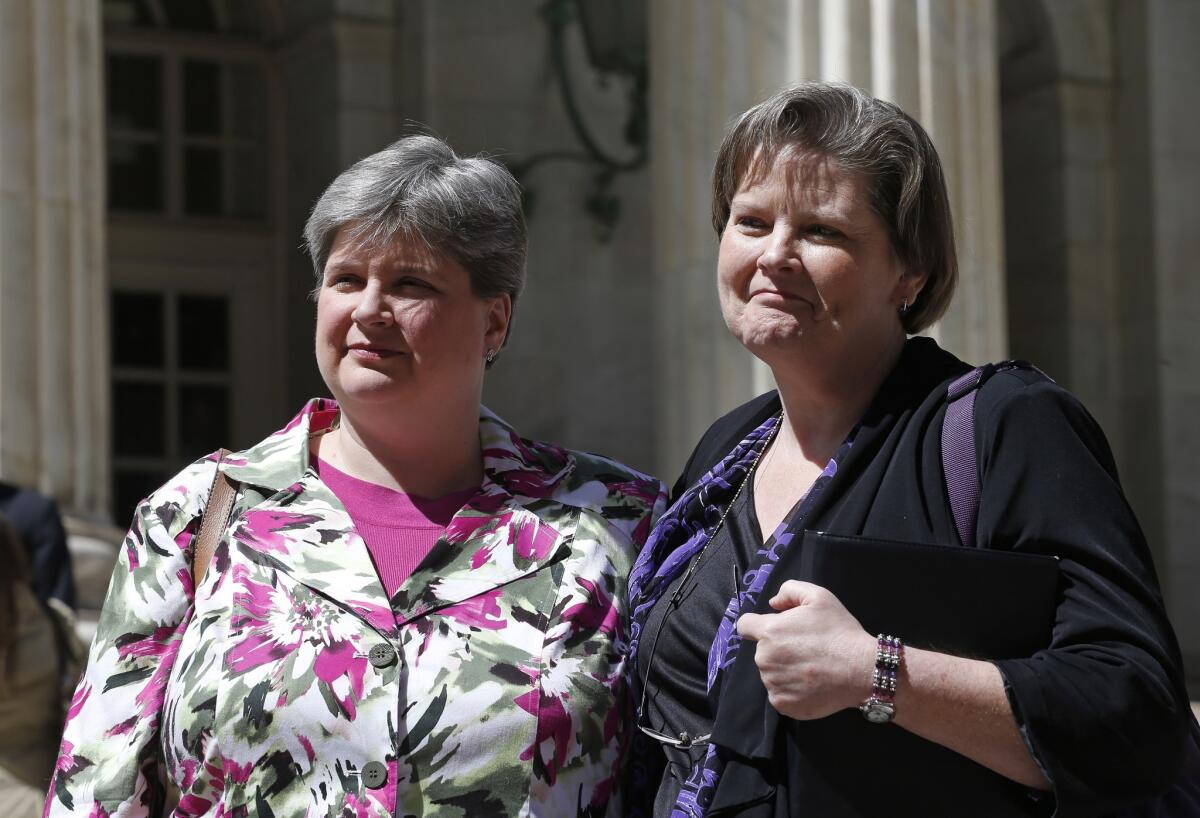Opinion: Those thuds were two more gay-marriage bans hitting the trash can

- Share via
Remember the old days -- say, a year ago -- when a court ruling striking down anti-gay marriage laws was big news? Now it just feels like the further crumbling of legally sanctioned prejudice.
And while that’s a good thing, advocates for marriage equality shouldn’t lapse into complacency, because the battle is not even close to being won.
The first of the two most recent rulings come from a federal appeals court in Denver, which ruled Oklahoma’s ban on gay marriage is unconstitutional, paralleling an earlier decision by the same court on a similar ban in Utah (both decisions are being appealed). The second ruling comes in Florida, where a county judge in the Keys ruled that state’s constitutional ban on gay marriage is, in fact, unconstitutional because it violates the 14th amendment guarantee of equal protection. That ruling was limited to one county, and immediately appealed, but it sets in motion the likelihood of a broader ruling down the road.
To date, 19 states and Washington, D.C., allow gay and lesbian couples to marry, and in 14 other states, judges have ruled against laws barring gay marriage, which remain in place while appeals progress. Three states offer some form of civil union or domestic partnership status, though they should drop the segregation distinction and allow full marriage for those who want it.
According to the Freedom to Marry organization, as it now stands, nearly 44% of the U.S. population lives in states allowing gay marriage. Our colleagues on the news side put together this interesting graphic, which displays over time the changes in gay marriage laws state by state. In this case orange -- laws restricting gay marriage -- is the new bad and purple is the new good, denoting states recognizing gay marriage. Note how in June 2013 the colors begin to change rapidly in the wake of the U.S. Supreme Court decision striking down that appalling Defense of Marriage Act.
The issue remains controversial, obviously. Oklahoma Gov. Mary Fallin condemned the federal court decision in the kind of right-wing terms that has fueled anti-government showdowns in Nevada, and in Murrieta. “Today’s ruling is another instance of federal courts ignoring the will of the people and trampling on the right of states to govern themselves,” she said.
That was the basic argument segregationists used more than a half-century ago, and it is just as wrong-headed now as it was then. It is precisely the role of the federal courts to defend the minority against the majority when it comes to basic civic liberties. The 14th Amendment’s guarantee of equal protection supersedes any possible states’ rights claim.
In all our diverseness, people remain people and should be able to take part equally in all aspects of contemporary society, be it a contract, a job or a marriage.
Follow Scott Martelle on Twitter @smartelle.
More to Read
A cure for the common opinion
Get thought-provoking perspectives with our weekly newsletter.
You may occasionally receive promotional content from the Los Angeles Times.










